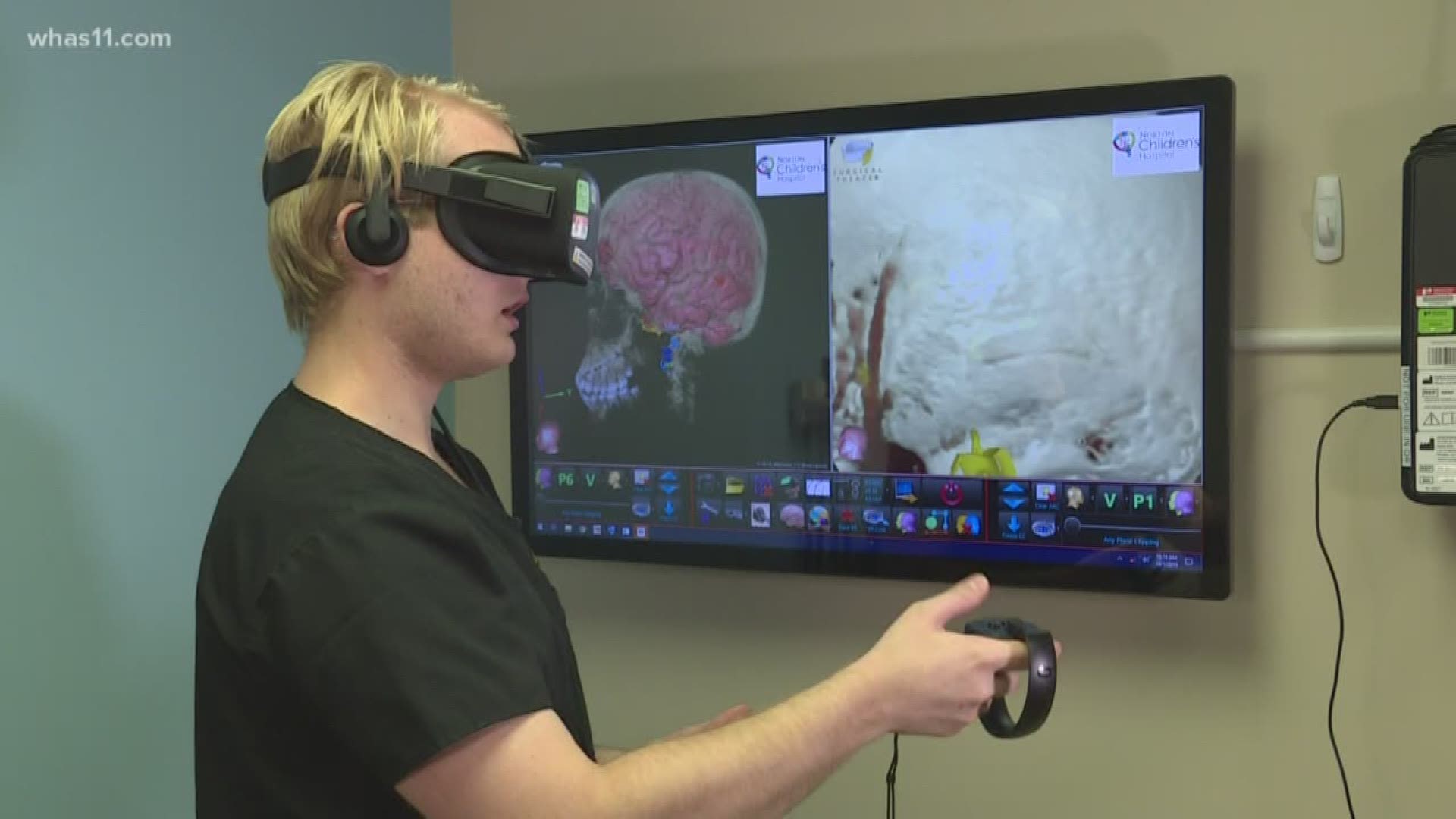LOUISVILLE, Ky. (WHAS11) -- Imagine being able to see inside a child’s skull and practice a procedure before you ever step into an operating room. That's the reality for neurosurgeons and their patients at Norton Children's Hospital.
"It literally lets you fly around in someone's brain,” said Dr. Ian Mutchnick, a neurosurgeon with Norton Children’s Hospital.
You can see it all, from the blood flow, the bone, the white matter and brain function. It's all there, taken from 2D scans of the brain, compiled into one 3D interactive model.
This form of virtual reality is called Surgical Theater and Norton Children's Hospital is the first pediatric hospital in the region to offer it.
"This is a pretty serious, I think, game-changing tool for the way complicated neurosurgery's going to be done moving forward into the future," Dr. Mutchnick said.
Dr. Mutchnick has used the VR system with dozens of his patients, giving children with brain tumors or epilepsy the controls to see a 360 degree view of what's going on.
"In a way that makes it feel like they're in their own skull, in their own brain, or hippocampus, depending on what we're trying to show them," Dr. Mutchnick said.
It can be a scary situation met with a tool to ease confusion and doubt for patients, their families, and their doctors.
"It can allow us to integrate a lot of information in ways that are visually easy to understand and that can help us make decisions on what procedure might be best. It can tell us that we might need address a certain problem from a different angle than what might be traditional," Dr. Mutchnick said.
That's exactly what happened with one of his recent patients.
"This is the most serious case we've done so far."
A planned surgery was canceled after doctors viewed the brain scans in 3D form, seeing the anatomy from all angles.
"It became clear, the lesion was much more extensive than we'd appreciated, which really changes how we think about taking this lesion out," Dr. Mutchnick said. "It became a much higher-stakes game."
In the past, surgeons have only had access to 2D scans from MRIs and CT scans, leaving gaps in the overall picture and 3D printing is costly and timely.
"To create images like this used to take an entire team of people."
Now, a surgeon can locate the issue within minutes, and practice their procedure before ever stepping into the OR. It can also be used as an aid once the surgery begins.
Surgeons are in the early stages of this new reality but hope to have a better grip on it within the next few months.
Surgical Theater was made possible through the Children's Hospital Foundation with support from the community, WHAS Crusade for Children and Texas Roadhouse. The foundation is working to raise additional funds to fully implement the technology. You can help by donating at HelpNortonChildrens.com.

